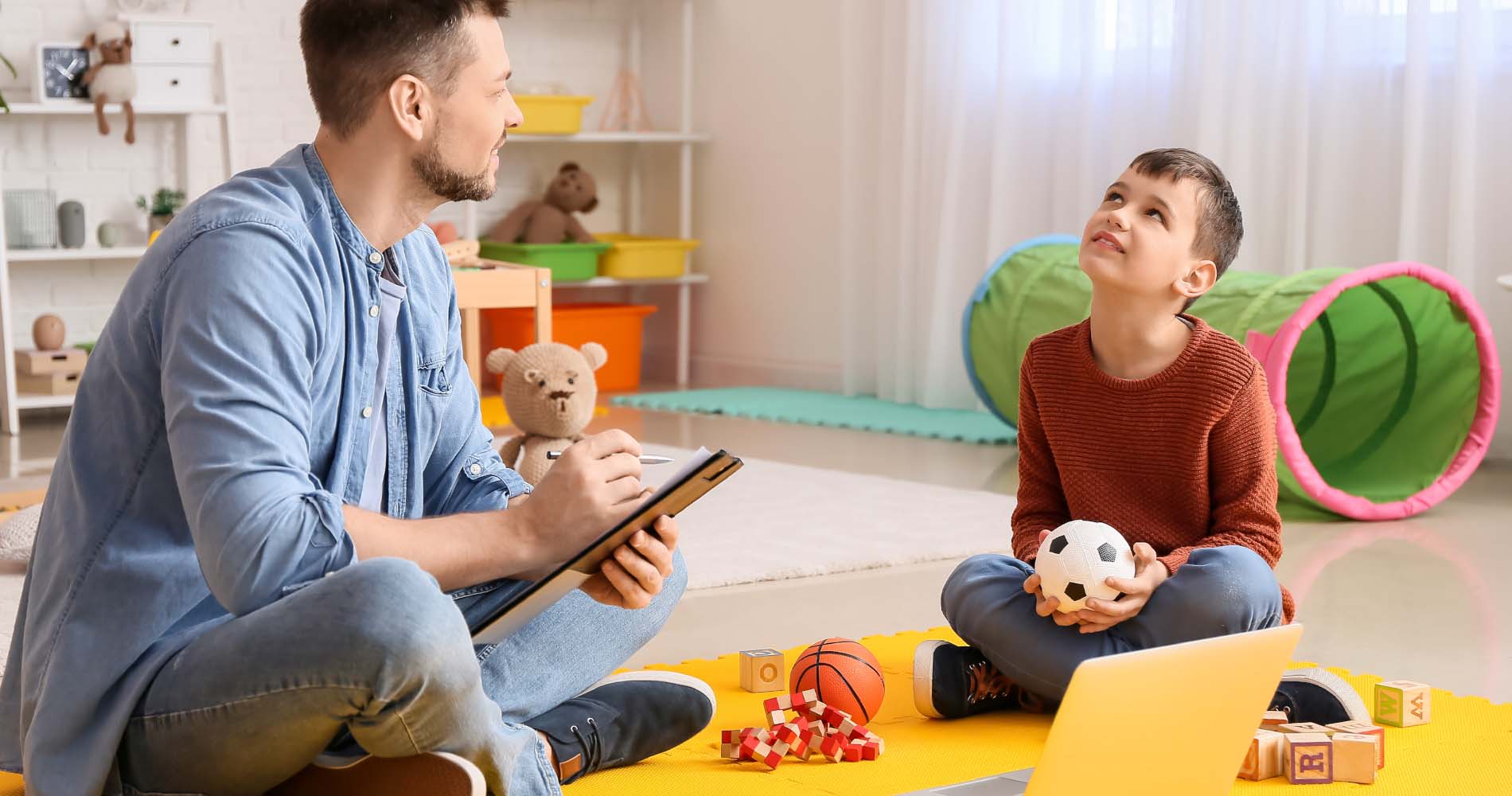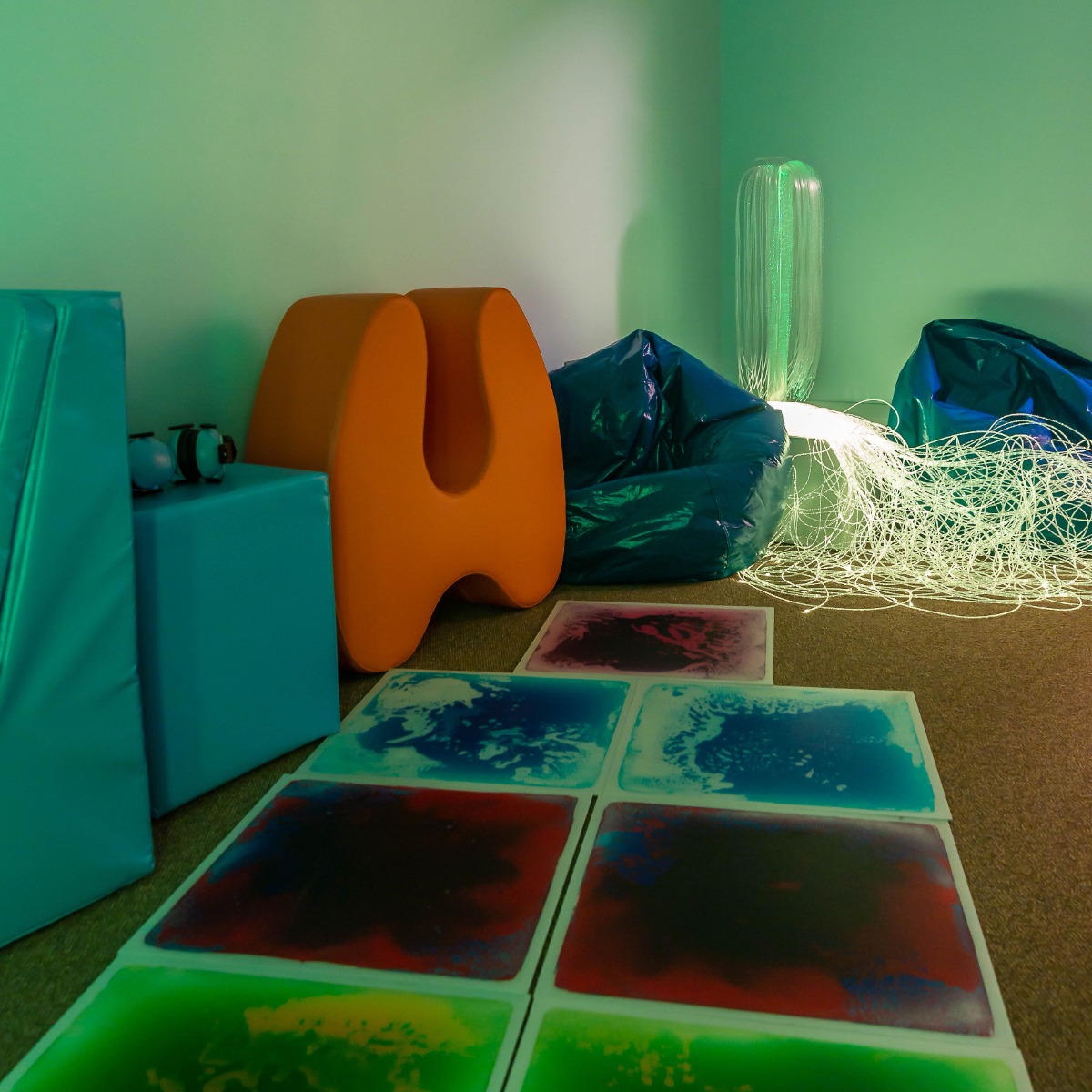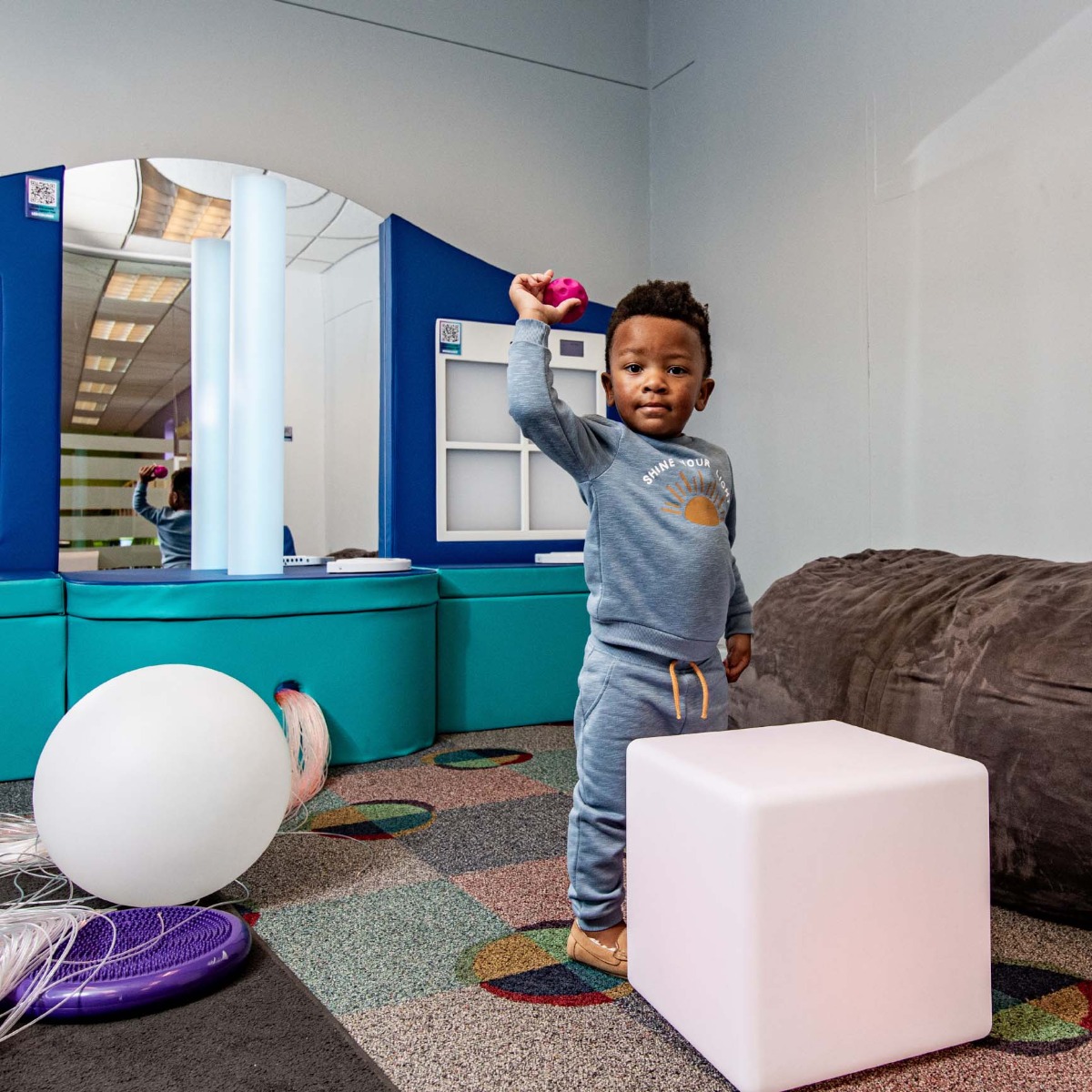Join us in empowering people as we celebrate World Autism Month in April. By bringing awareness to the sensory aspects of autism spectrum disorder (ASD), we can help advocate for better accommodations and greater inclusion. Our team of occupational therapists and product designers work to create tools that mitigate the effects of sensory overload, empowering those with autism to thrive and participate in their communities. Many places, such as airports, libraries and stadiums, are installing sensory rooms so that people with autism or sensory processing disorders also feel comfortable there.
Whether you have autism or are the parent of a child with autism, it can be hard to communicate the challenges of ASD to others. World Autism Month can be a good time to bring those conversations to the forefront of people’s minds. Here are some ways to help others relate to your experience of autism.
1. Educate others
There is often nothing very obvious that sets apart a child with autism from their peers. However, they often have ways of learning and interacting that sets them apart. This might make it hard for someone else to understand their behavior. By educating others about the signs and symptoms of autism, you can increase their understanding of you/your child’s sensory needs, as well as promote further inclusion of those who are ‘different.’ Some common features of autism include:
- Social communication challenges, such as difficulty with eye contact, limited gestures or facial expressions, and delays in speech and language development.
- Engaging in repetitive movements or actions, such as hand-flapping, rocking or lining up objects.
- Heightened sensitivity or aversion to sensory stimuli, such as loud noises, bright lights or certain textures.
- Intense focus on specific topics or activities, often to the exclusion of other interests.

2. Cultivate empathy
It’s important to remember that there are not always concrete things another person can do, other than be empathetic to your reality. Showing friends what you need from them can go a long way toward surrounding yourself with an empathetic support system. Some things you may want from your friends and family, and that you can offer others in a similar position, include:
- Judgment-free listening about your concerns, experiences and hopes.
- Validation of your emotions and acknowledgement about the challenges you face.
- An offer to help, whether it is providing resources, lending a listening ear or other practical assistance, like picking up groceries to lighten your load.
- Recognition that autism manifests differently in each individual, so that you can focus on your/your child’s unique strengths and needs instead of making comparisons.

3. Create a welcoming environment
Creating a kinder, more inclusive world for individuals with autism starts with understanding, acceptance and advocacy. As parents, educators and members of the community, we all play a vital role in fostering an environment where everyone feels valued and respected. You can promote kindness and inclusion by modeling some of the following:
- Embrace neurodiversity and celebrate the unique strengths and talents of people with autism to foster greater acceptance.
- Be mindful of sensory sensitivities and create sensory-friendly spaces that accommodate those with autism. Consider factors such as lighting, noise levels and sensory materials when planning activities or events.
- Practice patience and compassion in your interactions. Everyone has their own pace of learning and way of experiencing the world.
Help support autism awareness in your family, school and larger community this month with various tools and resources that are available. In addition to behavioral shifts you can make to encourage inclusion, you can organize larger community events to raise awareness. You can fundraise for a sensory room in your community library or calming corners at school. Host a block party with sensory-friendly activities. These efforts and more will go a long way to foster greater understanding and inclusion about autism in the places where it matters most to you and your child.
Explore our variety of autism-friendly tools to help you/your child.
























Comments